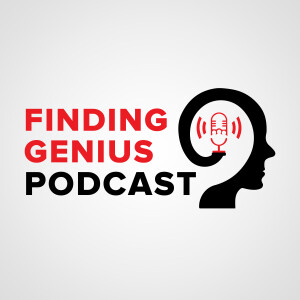
Computing COVID: Computational Biology Research with Oak Ridge National Laboratory's Dan Jacobson
 2020-10-28
2020-10-28
Working on COVID-19? This podcast is for you. This episode offers a valuable conversation with a comprehensive yet detailed understanding of SARS CoV-2 pathogenicity.
Listen in as a front-line researcher discusses the computational biology of COVID-19 from three directions: the viral action, the human response, and environmental influences on both.
Listen and hear
- The viral biology of pathways this particular coronavirus inhibits and disrupts, such as the RAS and Kallikrein systems,
- How this disruption leads to bradykinin storms and hydrogel formation in the lungs, which impede oxygen exchange and cause organ distress, and
- What therapeutics directly address these disruptions and other patterns they are hopeful this computational and systems biology will reveal.
Daniel A. Jacobson is a computational systems biologist at Oak Ridge National Laboratory. Oak Ridge is part of the national laboratory system in the U.S., and has access to world-wide data and top researchers. His lab is tracking all the SARS CoV-2 sequence data from around the world and finding significant patterns that may impact pathogenicity and looking at evolutionary patterns that may give insights. He shares an invaluable level and type of information with listeners in this conversation, explaining exactly how COVID-19 infects cells and what pathways it disrupts.
For example, he explains how after looking at the "dynamic tension" points in normal systemic pathways, they were able to identify how this virus disrupts specific aspects of the RAS pathway, kallikrein system, and vitamin D reception in infected patients. The resulting bradykinin storm and increased hyaluronic acid leads to the symptoms doctors find so difficult to overcome such as hydrogel in the lungs.
But there's good news too: they've identified a number of pharmaceuticals that can help in these metabolic pathways, even down to vitamin D regulation. Currently, researchers have identified three different drugs that do what the lab's mechanistic models predicted and help patients suffering from the virus. He adds that they are expanding their list, hoping to identify a larger battery of drugs that will also help.
He says there's a significant push to join forces with clinical colleagues and explore multiple common therapies. He also discusses the mutation patterns. They are identifying how the virus changes over the course of the pandemic and trying to infer how those changes will impact pathogenicity. Then they can observe how those changes are promulgating in the human population.
Finally, they are also plugging in environmental components.
Find their papers in eLife, Molecular Biology and Evolution, and bioRxiv and google them for more.
Available on Apple Podcasts: apple.co/2Os0myK
More Episodes
Create your
podcast in
minutes
- Full-featured podcast site
- Unlimited storage and bandwidth
- Comprehensive podcast stats
- Distribute to Apple Podcasts, Spotify, and more
- Make money with your podcast
It is Free
- Privacy Policy
- Cookie Policy
- Terms of Use
- Consent Preferences
- Copyright © 2015-2024 Podbean.com






